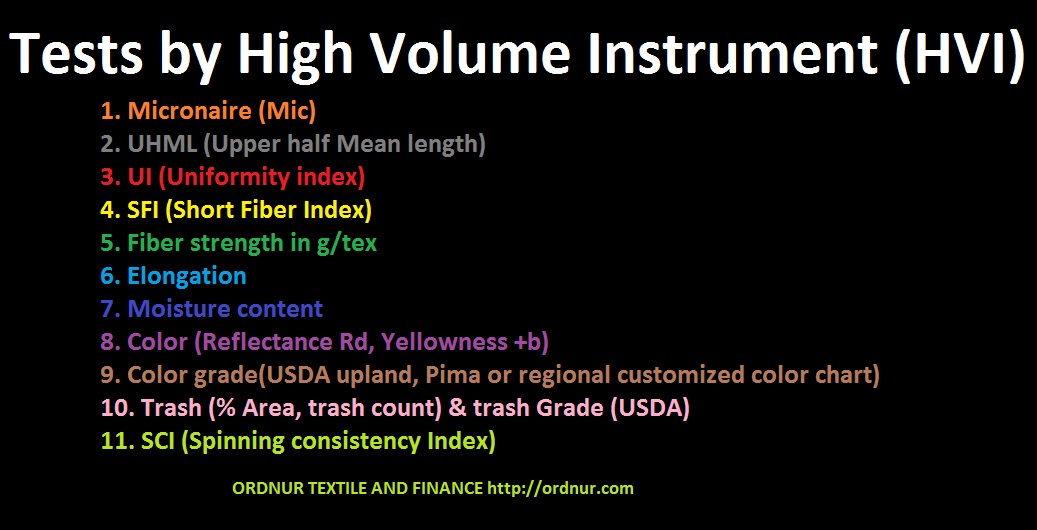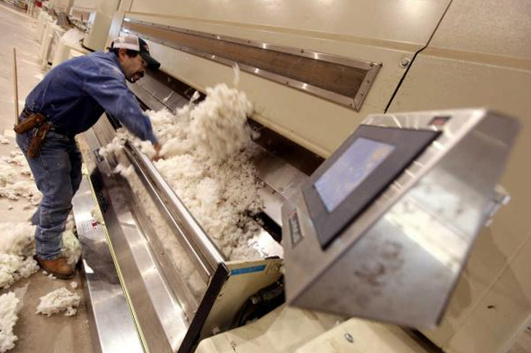Introduce with High Volume Instrument (HVI)
Advanced fiber testing system high volume instrument is used to determine fiber properties in the bale management system. It is a fiber classing system. HVI is used to determine fiber length, strength, maturity, micronaire, and other properties of the cotton fiber. HVI test report helps to law down the same properties bale before mixing. Mixing is a very important process for spinning.
Tests by HVI
- Micronaire (Mic)
- UHML (Upper half Mean length)
- UI (Uniformity index)
- SFI (Short Fiber Index)
- Fiber strength in g/tex
- Elongation
- Moisture content
- Color (Reflectance Rd, Yellowness +b)
- Color grade(USDA upland, Pima or regional customized color chart)
- Trash (% Area, trash count) & trash Grade (USDA)
- SCI (Spinning consistency Index)
Micronaire (Mic)
The parameter is describing the cotton fiber fineness. Micronaire Ratings: below 3.0= very fine 3.1-3.9 =fine 4.0-4.9 =average 5.0-5.9 = course over 6.0 =very coarse
Upper Half Mean Length (UHML)
Upper Half Mean Length means length by weight of the longer 50% of fibers.
Uniformity Index (UI)
Uniformity Index= length uniformity of the fibers. Uniformity index= ML. 100/UHML Classification of the length uniformity: very low-> below 76 low->77-79 average-> 80-82 high->83-85 very high ->above 86
Strength
Breaking force of the fiber bundle divided by fiber fineness Assessment of the fiber strength in gram per tex <gf/tex> (without long-staple) below 21= very low 22 to 24 = low 25 to 27= average 28 to 30=high over 30= very high
Short fiber index (SFI)
Short fiber index =percentage of fibers shorter than 1/2 inch or 12.7 mm
Spinning consistency index (SCI)
A coefficient is calculated by means of various quality characteristics by multiple regression analysis. The SCI used is calculated with the original formula provided by USTER. The main benefit of the SCI is a simplified selection of bales for a predetermined blend of fibers as well as the long-term check of the say material blend.
Color
Reflectance (Rd) – reflectance of the fibers, higher Rd values mean a higher color grade. Yellowness (+b)-Yellowness of the fibers (Nickerson/Hunter scale)
Trash
Trash Area (Tr Area)
• Area of the sample covered with trash particles.
• Trash Cnt (Tr cnt)
• A number of trash particles in a sample.
Ambient conditions
The standard temperate atmosphere for textile testing according to ISO 139
• Temperature: -20+_(plus-minus) 2 degree C -68+_ 4 degree F
• Relative Humidity(RH):65+_4%


